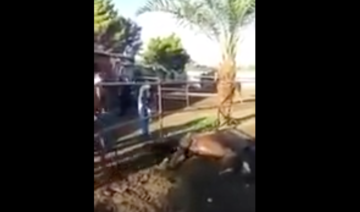A perfect storm of events across the Middle East is threatening to undermine Unifil’s efforts, with the peacekeeping force surrounded by war and political turmoil.
To Lebanon’s south lies Israel and the Occupied Palestinian Territories, where last week Israeli troops killed 16 people in the Gaza Strip, in some of the worst bloodshed the coastal enclave has experienced in years.
The killings, which occurred at the start of a six-week protest leading up to the 70th anniversary of Israel’s creation, added to the sense of impending crisis sweeping the region.
In Syria, on Lebanon’s eastern border, a conflict that began when the government of President Bashar Al-Assad crushed a peaceful uprising for political change in 2011, now resembles an intractable proxy war between some of the world’s most powerful countries.
The US, Russia, Iran, Turkey and Israel all find themselves deeply involved in a fight that has displaced an estimated 11 million people and killed hundreds of thousands. While all sides talk about wanting to end the carnage, their actions only appear to be sowing instability across the wider Middle East.
Israel has warned against Iranian influence in Syria, where Tehran’s militias have played a decisive role in saving the Assad regime from collapse.
The perennial stand-off between the two countries turned violent in February, when Israel claimed to have intercepted an Iranian drone over its airspace. Israel retaliated with an airstrike on what it said was the drone’s command-and-control center in Syria. On returning from the mission, an Israeli F-16 fighter jet crash-landed after facing Syrian anti-aircraft fire.
One group that could yet exploit the rising tensions in both Syria and Gaza is Hezbollah, the powerful Iranian-backed Shiite militia. It has long promoted itself as a champion of the Palestinian people and one of the few forces in the Arab world willing to confront the Jewish state.
Israel fears Hezbollah — encouraged by its success in Syria — is stockpiling tens of thousands of rockets in preparation for a new war.
Israel has been building a fence on the Lebanon border in an apparent effort to forestall any infiltration by the militants, but in a region already riven with historical land disputes the barrier is highly controversial. Both the Lebanese government and Hezbollah have said that it cuts into contested territory and risks becoming a de facto border.
If another war does break out, it may well happen in the summer after two more events that could provide the crucial final spark.
US President Donald Trump is due to decide whether to renew the Iranian nuclear deal by May 12. While critics of the deal claim it has emboldened Iran economically and militarily, canceling the agreement could leave Tehran feeling that it has nothing to lose by providing further support to Hezbollah and militant Palestinian groups.
That same month the US will formally move its embassy in Israel from Tel Aviv to Jerusalem — a decision that is sure to infuriate millions of Arab and Muslim citizens across the Middle East.
Looming regional crisis threatens UN peace mission
Looming regional crisis threatens UN peace mission














